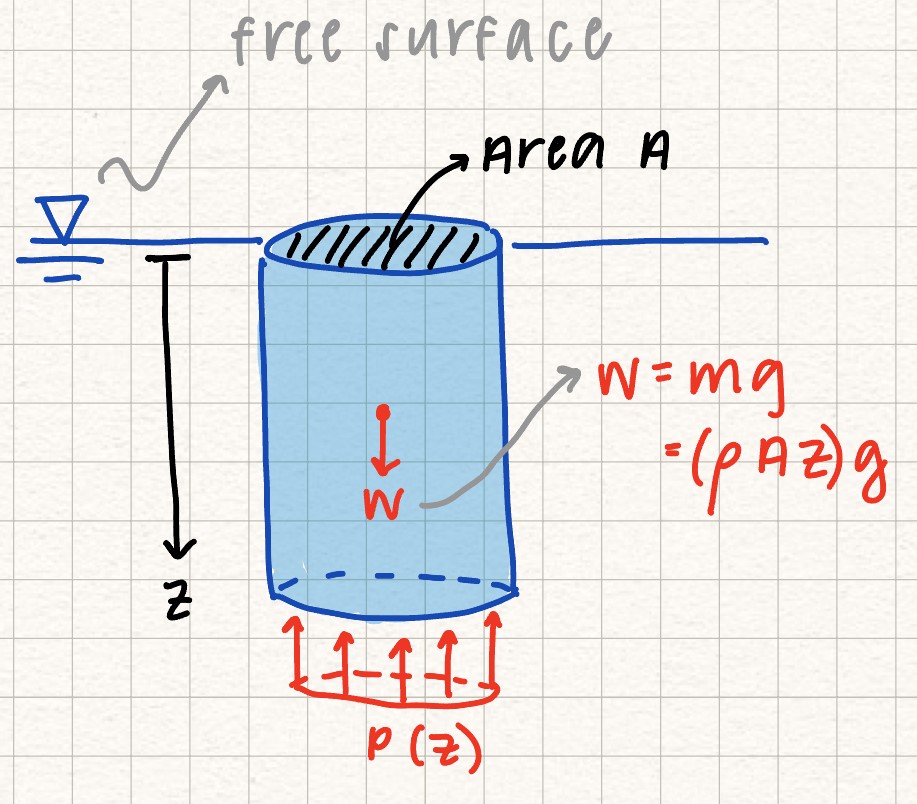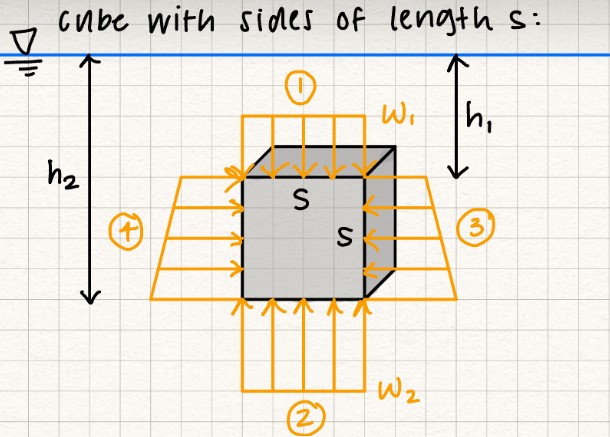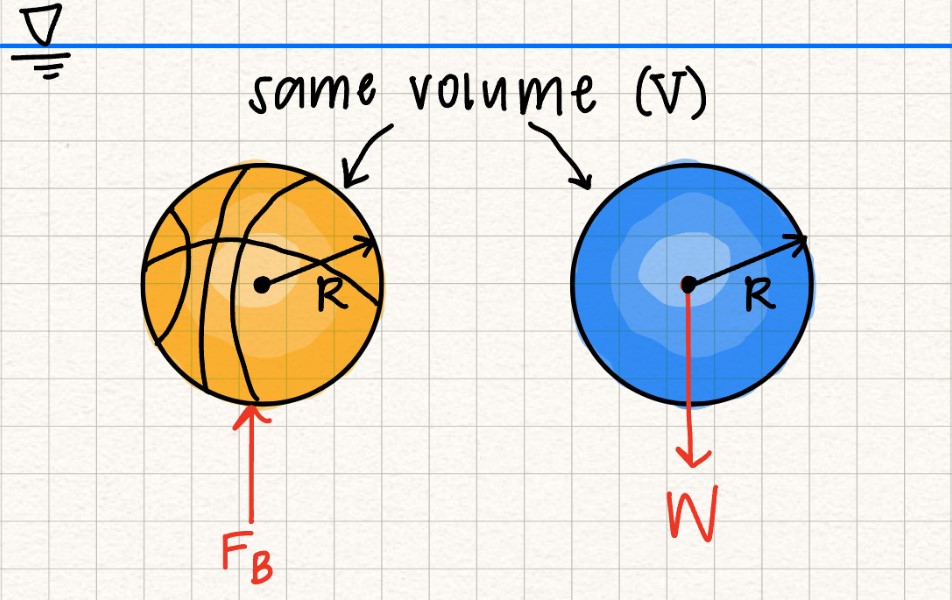Hydrostatic fluid pressure
Pascal's Law: A fluid at rest creates a pressure that is the same in all directions.
Hydrostatic Fluid Pressure: Hydrostatic fluid pressure refers to the pressure from a fluid that is at rest (the "static" part of hydrostatic). It orginates from the force of gravity acting on the fluid.
Fluid pressure
For an incompressible fluid (density \( \rho \)) at rest, the pressure \( P \) varies linearly with fluid depth \( z \). This means that the pressure along a horizontal plane (at a certain depth \( z \)) is constant.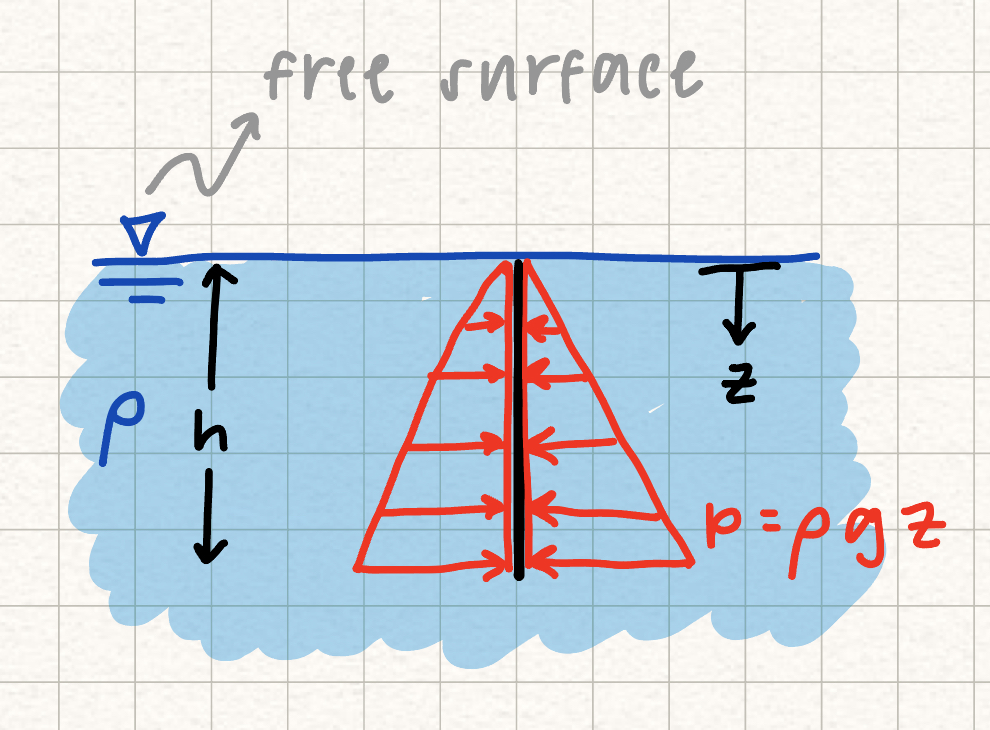
Pressure, distributed loads, and free body diagrams
Given a plate submerged in water, we can choose to draw the FBD of the plate in 2D or 3D:
In 3D, the value for \( w \), the distributed load on the plate from the fluid, is just the pressure \( P \) at depth \( h \). To solve for the resultant force from the distributed load we multiply by the area of the plate.
In 2D, the the value for \( w \), the distributed load on the plate from the fluid, is the pressure \( P \) at depth \( h \) multiplied by the plate depth \( b \). To solve for the resultant force from the distributed load we multiply by the length of the plate.
Review?
Hydrostatic fluid pessure is a type of distributed load. If you need a refresher on distributed loads, see the distributed loads reference page.
Fluid pressure with slanted and curved surfaces
We will often be required to analyze the hydrostatic fluid pressure on surfaces that are not perfectly horizontal or vertical. In these cases, it is easier to redraw our system and create articifial horizontal and vertical "surfaces", adding the force from the FBD of the weight of the water trapped in our horizontal and vertical surfaces.
This method will result in the same resultant force on the slanted surface, but the distributed loads are easier to calculate.
Using this method, we can solve for the resultant force by calculating the total horizontal forces (\( F_H \)) and vertical forces (\( F_V \)) and relating them using
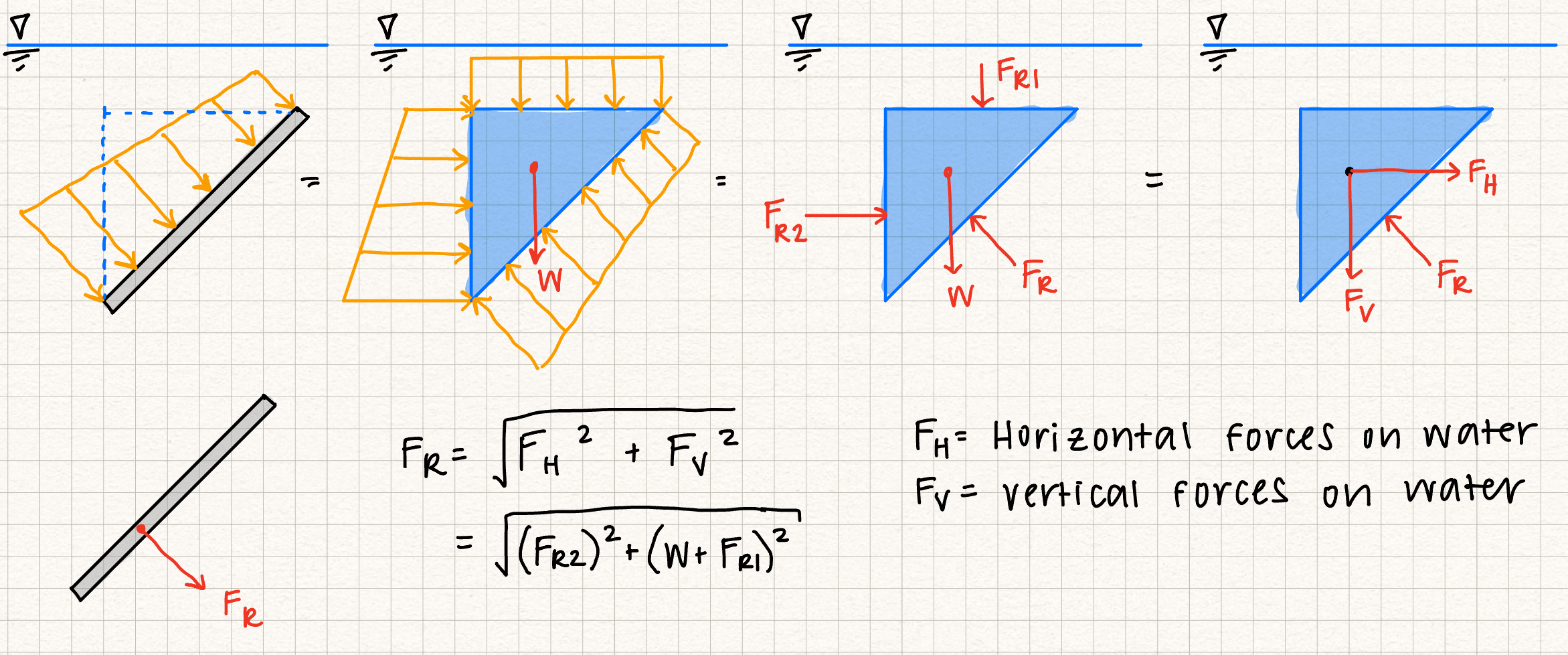
Buoyancy
Archimedes' Principle: Any object that is either partially or totally immersed in a fluid has a buoyant force \( F_B \) equal to the weight of the fluid displaced by the object (\( W_{displaced} \)).
